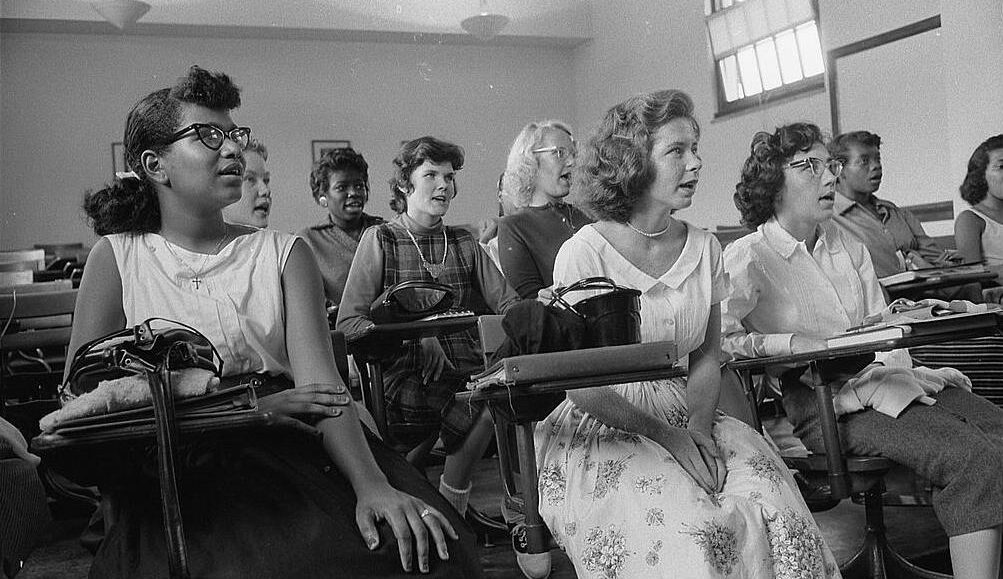Thurgood Marshall’s Hard Work Led to the End of Legalized Racial Segregation in Schools
But Standardized Tests Have Surreptitiously Succeeded in Keeping Black Students Back
By D. Kevin McNeir
@mcneirdk
On May 17, 1954, U.S. Supreme Court Justice Earl Warren delivered the unanimous ruling in the landmark civil rights case Brown v. Board of Education of Topeka, Kansas. State-sanctioned segregation of public schools was a violation of the 14th Amendment and was therefore unconstitutional.
Thurgood Marshall, a brilliant lawyer, and jurist who later broke the color barrier as the Supreme Court’s first African-American justice, served as the lead attorney for the plaintiffs.
This historic decision marked the end of the “separate but equal” precedent set by the Supreme Court nearly 60 years earlier in Plessy v. Ferguson and served as a catalyst for the expanding civil rights movement during the decade of the 1950s.
Marshall’s determination to end legalized segregation can be traced back to his days in law school – if not earlier. He attended all-Black Lincoln University, the oldest African-American institution of higher education in the country and, after being rejected from the University of Maryland School of Law because of his race, went on to attend law school at Howard University where he graduated first in his class.
While at Howard University, Marshall met Charles Hamilton Houston, the vice-dean of the law school. In 1935, Houston directed the NAACP Legal Defense and Education Fund; Marshall became his right-hand man.
During this time, Marshall realized that the ruling of the Supreme Court in Plessy was inherently flawed because “separate” could never be “equal.” He resolved that the only way for African Americans, or anyone else, to succeed was to receive an education. However, there existed an unarguably wide chasm in the quality of education between blacks and whites.
In an interesting anecdote that this writer only recently discovered, the discrepancy between the quality of education became all-too apparent for Marshall while he was traveling with Houston.
Marshall witnessed a Black child biting into an orange. He (the child) had received such a poor education that he neither knew what it was nor how to properly eat it. From this point on, Marshall and Houston were dedicated to a strategy which aimed at ending segregation.
Here’s where the notion of how standardized tests can and often have kept Black students out, held them back or led to their being labeled with terms like “moron,” “idiot,” “imbecile,” and “feebleminded” (actual markers used to describe Negroes in the first half of the 20th century).
The child Marshall observed would be unable to correctly solve a word analogy with the word “orange” because it was foreign to him. But foreign should not be equated with stupid – or by extension one lacking intelligence and the capacity to learn and therefore unfit for society.
In Brown v. Board of Education, the Court reasoned that the segregation of public education based on race instilled a sense of inferiority that had a hugely detrimental effect on the education and personal growth of African American children. But the “deliberate speed” called for in the Court’s decision was quickly overshadowed by events outside America’s courtrooms including in Montgomery and Birmingham Alabama, and Little Rock, Arkansas.
At the same time, efforts to end segregation in Southern colleges, and later in institutions throughout America, were marred by the refusal of officials, regents, and alumni to welcome Blacks into previously all-white student bodies.
For example, in the summer of 1955, administrators at the University of Texas at Austin, realizing they had to integrate their classrooms, looked for more subtle ways to suppress the number of Black students they were forced to admit.
They turned to using aptitude-test scores, noting that white UT freshmen had significantly higher scores than incoming freshmen at three Texas Black colleges and with a standardized-test cutoff point that would eliminate about 10% of UT freshmen and about 74% of Blacks.
In summary, from grade school to college, students of color have suffered from the effects of biased testing.
- Since their inception a century ago, standardized tests have been instruments of racism and a biased system;
- Students of color, particularly those from low-income families, have suffered the most from high-stakes testing in U.S. public schools; and
- Today, a movement is growing across the country to resist testing abuse and overuse and to promote authentic assessment.
As the scholar and educator, Ibram X. Kendi of the Antiracist Research & Policy Center at Boston University, and author of “How to be an Antiracist” observes, “We still think there’s something wrong with the kids rather than recognizing there’s something wrong with the tests. Standardized tests have become the most effective racist weapon ever devised to objectively degrade Black and Brown minds and legally exclude their bodies from prestigious schools.”
Young Wan Choi, manager of performance assessment for the Oakland Unified School District, Oakland, California agrees.
“While much has been said about the racial achievement gap as a civil rights issue, more attention needs to be paid to the measurement tools used to define that gap,” Choi said. “Education reformists, civil rights organizations and all who are concerned with racial justice in education need to advocate for assessment tools that don’t replicate racial and economic inequality.”
Thurgood Marshall may have won the battle but it is clear the struggle for equity and inclusion continues.


